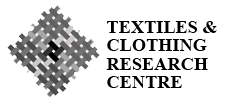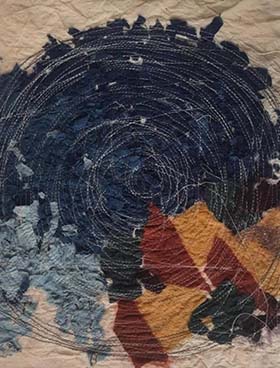File Type:
Manuscripts in the editable format must be submitted to editorstcrc@gmail.com and infotcrcdelhi@gmail.com in the preferred format i.e. Word (Doc or DocX).
Title Page:
The title page must begin with the:
- Title of the manuscript in bold, uppercase, Times New Roman, font size 12.
- The names of authors in Times New Roman, font size 12.
- The affiliation(s) and address (es) of the author(s).
- Email address and telephone number(s) of the corresponding author.
- A brief bio of the authors’ achievements and interests in 100 words
Abstract
The abstract should start on a new page. The abstract must be between 150–250 words; it must have an introduction, describe the aim of the study, the methods, the results, and a conclusion. Please provide 3-6 keywords at the end of the abstract. This will be excluded from the paper’s word count.
Body of the manuscript
The manuscript should be divided into the following sections: Introduction, Materials, and Methods, Results and Discussion, Conclusion, Acknowledgement, Funding Source, References
- Research papers: 2000- 4000 words including abstract, tables, figures, and references.
- Review articles: 1000-2000 words.
Quick points for writing style: Times New Roman, size: 12, Line spacing: 1.15, Text alignment: justify, Text heading in uppercase, Keep the margins for the page layout: normal (i.e.1″)
The following considerations should be kept in mind:
- The whole paper must be written in English, preferably in British English.
- Numerals between one and ten must be spelled out. Do not begin a sentence with numerals.
- When using abbreviations, expand the term in the abstract (if the term is to be repeated within the abstract) and at the first mention within the body of the manuscript.
- Maintain consistency in the use of units. Use internationally accepted short forms of units. Please note, ‘conc.’ and ‘alc.’ are not acceptable in the text. Dates in an archaeological context should be as per internationally accepted BCE or CE.
References
The authors may use the format for references given below or in any standardized prescribed format of referencing (Chicago styles of referencing).
- References for books: Author (surname first), the title of the book (in italics), name of the publisher, place of publication, date of publication, page/s number/s.
Example: McPherson, Kenneth, The Indian Ocean: A History of People and the Sea, Oxford University Press, London, 1993, p 208.
- References for articles cited from Journals and edited volumes: Author (surname first), the title of the article should be in inverted commas, name of the Journal/book (in italics), name of the publisher, place of publication, volume number, year and month of publication, page/s number/s.
Example: Ray, Indrani, “India in Asian Trade in the 1730s – an 18th Century Memoir”, in Essays in Medieval Indian Economic History, Satish Chandra (Ed.), Indian History Congress Publication, New Delhi, 1987, pp 244, 252.
- For Web references: Author (surname first), year of publication, title, complete address of link referred, date of access.
Example: Cammans J. (2006). Nutrition, Health, and Related Claims. Accessed fromØ http://www.health.sa.gov.au/pehs/Food/survey-health-claims-jan07.pdf. Accessed on 11th Jan 2009.
The authors are also responsible for ensuring that all referred material is paraphrased and cited with complete details given in the references. In the absence of proper citation/references, any accusation of plagiarism will be borne by the author. Please note, plagiarism is a serious offense and punishable by law under the Indian Copyright Act, 1957.
Figures and Tables
The figures, diagrams and high-resolution images should be sent separately from text in JPEG format. Give appropriate titles to the tables and figures, and number them using Arabic numerals. Table titles must be above the table. Figure titles must be placed under the figure. All abbreviations in the table must be expanded under the table. Column headings should be brief. Please acknowledge the original authors/owners of the image or table, if any.
TCRC e-JournalVersion: Online (Peer Reviewed)Periodicity: BiannualPlace of Publication: Sukh Apartments Flat No.-B-4, J-3/76 D, Khirki Extension, Malviya Nagar, New Delhi – 110017, TCRC, New DelhiCountry of Publication: IndiaThe Textiles and Clothing Research Center (TCRC) e-journal aims to serve the Textile and Clothing community by publishing useful research, both from and to the researchers and practising professionals. To accomplish this, the e-journal is interested in articles from a wide range of fields of knowledge with application to Textile and Clothing Heritage. All the published papers will be peer-reviewed. The e-journal will be published biannually.TCRC e-Journal publishes original research papers, technical and traditional papers, case studies, textile heritage visit reports(museum visit having a textile collection, visit textile crafts artisans) review reports (book, conference or seminar review, exhibition notes, or any other related information), talk given by TCRC member, textile heritage news and resources, textile calendar (events, workshops, seminars, conferences, exhibitions, and web resources).The submission of a contribution for publication has to be original and it cannot enter in conflict with any article previously published elsewhere by the author(s). Also, it cannot be currently submitted for consideration to any other publisher. In case the paper is written under collaboration with more authors or institutions, it is the responsibility of the authors to obtain the required approval from all the parties involved. Authors must be the creators or owners of the images of their article or must have used and publishing permissions from the owners of the images. By submitting a contribution to TCRC e-Journal it is implicit that authors have previously obtained the appropriate permissions concerning any cultural heritage items, works of art, or persons depicted in the images. TCRC has a double-blind reviewing policy. This means that the names of the author and reviewer are withheld from each other to prevent bias. The reviewers assess whether the study is relevant, has followed ethical guidelines, and designed appropriately. They may raise questions on the methodology, interpretation of the data, statistical analysis, etc. if necessary. It is their decision to accept a paper, request modification if any, or reject a paper.In case of acceptance after peer review, the author(s) may choose to get the manuscript published under Open Access terms, wherein anyone can read/ download any article/ research paper without any fees.Manuscripts submitted to TCRC e-Journal are reviewed under the understanding that they have not been published, simultaneously submitted, or already accepted for publication elsewhere. Papers are usually reviewed within three months of their receipt. The papers will be published online (in Html format) as soon as they are accepted and are made available online in pdf format.Acknowledgements must appear at the end of the manuscript, after the conclusion. Authors must declare any conflict of interest in a separate section after the acknowledgements. All manuscripts must be submitted with details of the funding agency and the grant number. If the study is supported by multiple grants, all must be listed in this section. In case the research is not supported by any grant, this must be stated in a single sentence. The funding source must appear after the acknowledgements. Any illustrations, tables, figures, or quotes taken from a previously published source must be used in the manuscript only after due permission has been taken from the original author/copyright holders. The permission must be produced whenever requested by this journal. TCRC e-Journal will not take any responsibility for a breach in this matter. All studies involving the use of human participants and animal experimentation must comply with the principles of ethics and laws governing their use in research. TCRC e-Journal does not take any responsibility in case of a discrepancy on the part of the author in following ethical principles, and any consequences, as a result, must be borne by the author.There is a zero-tolerance policy towards plagiarism (including self-plagiarism) in our journal. Manuscripts are screened for plagiarism before, during, and after submission, and if found, they can be rejected at any stage of processing.The accountability of the article published in the journal is entirely of the author(s) concerned and not of the publisher/editor. The views expressed in the articles of the journal are those of the contributors, and it does not essentially correspond to the views of the publisher/editor. It will be the responsibility of the authors to seek copyright clearance for any part of the content of the articles. The publisher/editor of the journal is not liable for errors or any consequences arising from the exercise of information contained in it.




